No matter what way you look at it, cycling is booming. Encouraged by the Cycle to Work Scheme, more and more people are realising the benefits of commuting by bike. It seems that barely a week goes by without an announcement about a new greenway or cycling trail. And at the weekends there are ever-increasing numbers of cyclists out on the roads and trails enjoying a leisurely spin or putting in the miles in preparation for one of the big sportives such as the Ring of Kerry or the Wicklow 200.
This surge in interest has been matched by growth in the number of bike shops, rental and guiding companies, all backed by a large investment in cycling infrastructure, with plenty more to come.
Yet in spite of all this there is a lack of information about where to cycle. Last autumn I started work on a cycling guidebook. My goal is to document about 100 routes, covering the full spectrum – from gentle trails suitable for families to the toughest mountain days that would test even elite riders.
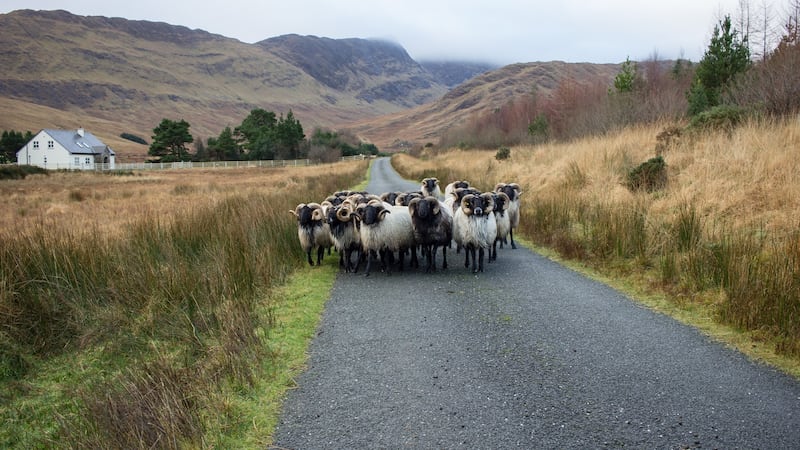
The following is a selection of six of the best routes that I have done since I started researching the book.
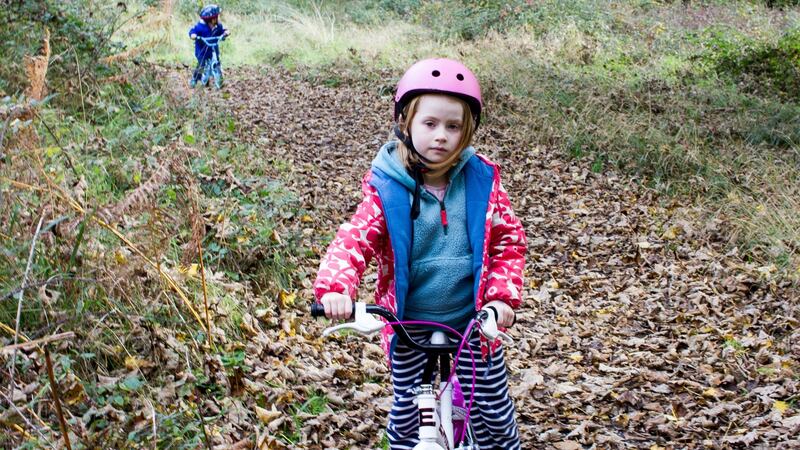
Portumna Forest Park 18km 70m Best for families and beginners and mountain bikers
The 450-hectare Portumna Forest Park lies on the northern shore of Lough Derg in Co Galway. The park, far from being a rectilinear plantation of spruce, has a wide variety of trees, including Scots pine, oak, ash, hazel, beech and birch, plus the occasional yew and juniper – and terrain, with patches of semi-native woodland, meadows, marshland and ponds. It is also home to over a dozen species of mammal: when I visited I spotted a few red squirrels and a herd of fallow deer grazing in a meadow.
As the park is generally flat and has very little in the way of rocks, roots or steep hills, it is the ideal place for a beginner to get their first taste of mountain biking. In fact a mountain bike isn’t even required; a hybrid would be well able for the trails. Bear in mind that all the loops should be done in an anti-clockwise direction starting from the car park and that cyclists should give way to walkers when they meet.
The park has four multi-use trails. The 1.4km forest friendly trail (white arrows) follows a wide tarmac path and is suitable for all, including wheelchair users and children’s bikes with stabilisers. The 2km-long woodland trail (blue arrows) is a little more adventurous and takes in a mix of gravel, forest paths and timber boardwalk, but is still suitable for small kids.
The two longer trails, Rinmaher and Bonaveen, consist mostly of narrow winding single track that can be combined into a really enjoyable 18km loop. From the car park follow the Bonaveen trail (red arrows) until you meet the white and blue trails. Here you continue along the Rinmaher trail (green arrows) until it crosses the road near the entrance, which you follow back to the car park.
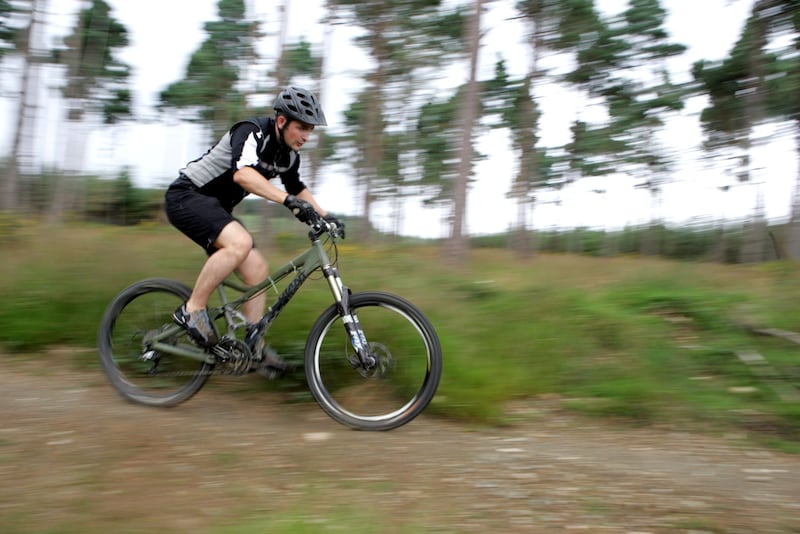
Ballinastoe 15km 330m Best for beginner and intermediate mountain bikers
Ballinastoe in the Wicklow Mountains is one of five Coillte mountain bike trail centres. The 14km loop, which has over 9km of purpose-built single track, is one of the most popular mountain bike trails in the country. The flowing trails never get too steep and the terrain is generally friendly enough – there aren't too many roots or rocks to deal with – so it's quite suitable for beginners. At the trail-head, Biking.ie offers bike hire, repair and guiding, as well as a small shop and bike-washing facility.
From the car park the trail climbs steep gravel roads to the first section of single track. After this, a long grind up another gravel road leads to some more technical climbing up a narrow path through the trees. Upon reaching the high point of the trail, the view deeper into the Wicklow mountains opens up and it’s worth making a short diversion to check out the view over Lough Tay from the JB Malone memorial.
With the bulk of climbing done, the trail starts to weave its way downhill across open hillside and though thick forest. Fully focused on the next bend, it’s easy to lose your sense of direction, but the way ahead is always clearly signposted. After regaining some height on an earlier section of the trail, the final run begins. The long fast downhill ends in a climax of tightly banked turns called berms that deposit you, wobbly-armed and jelly-legged, back in the car park.
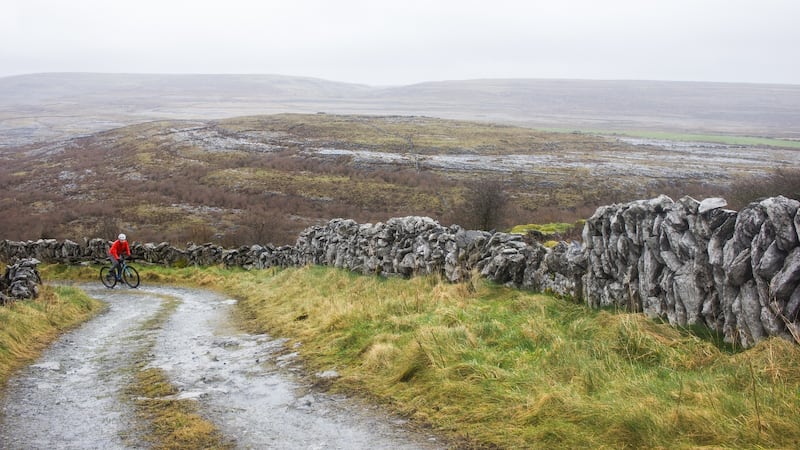
Inland Burren 45km 610m Best for intermediate riders looking for quiet roads
Carron, the only village in the Burren uplands, is set in the midst of the limestone pavement and green fields that the region is famous for. This route consists of two separate loops that form a figure of eight, with the village at its centre. This means that each loop can be done as a distinct route or they can be combined into one longer one.
The western loop heads east out of the village climbing briefly before turning left at the junction. I follow the open road, climbing steadily through the Clob valley, passing the Burren perfumery and the rocky shoulder of Slieve Carran, before taking a sequence of tight bends down to a junction. Here I turn right and take the road south to another junction.
A sign marks the start of the climb up the Glann corkscrew and offers the vital statistics of the climb. It is also equipped with a NFC (near field communication) chip that will take you to a page on Strava where you can see how others have fared on it. The climb is hard work, but at the top there is a great view and it’s well worth stopping to take it in while you catch your breath. From here it’s mostly downhill back to Carron.
The eastern loop is a little longer but has less climbing. After an abrupt start up a short but steep climb, I follow a network of small roads in a loop across the rolling hills before briefly joining the busy R448 and passing the Poulnabrone dolmen. There I have a choice: to turn left opposite the Caherconnell stone fort and follow a rough track (only really suitable for mountain bikes), or else retrace my steps along the Meggagh road.
I take the road less travelled and it isn’t long before it deteriorates into a muddy, rutted track. A steep and bumpy descent down a series of rocky hairpins leads to the road where I head south back to Carron.
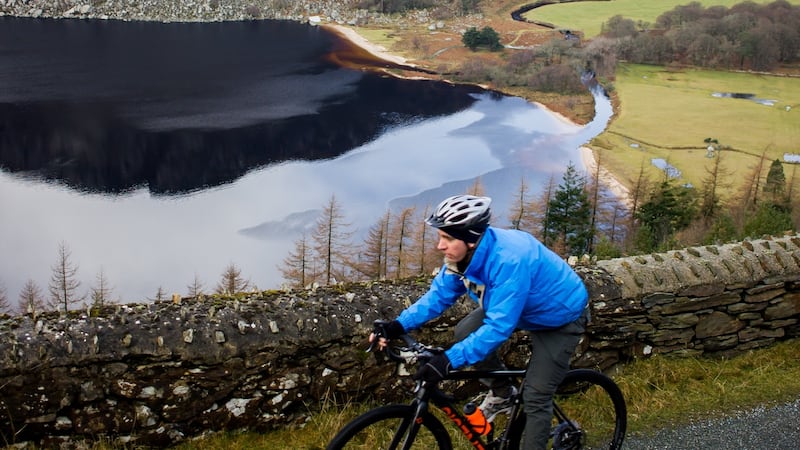
Sally Gap 42km 680m Best for riders looking to test themselves in the mountains
Dublin-based cyclists are blessed to have the Wicklow mountains on their doorstep. The network of roads that run through the valleys and over the high passes offers a huge variety of routes for cyclists of all tastes and abilities. The following route, although relatively short, packs in plenty of climbing and some of the best scenery the country has to offer.
With a few hours to spare on a sunny midweek morning, I leave the car in Roundwood and head north following the signs for Sally Gap. As I follow the road uphill, the fields and hedgerows are replaced by open hillside and pine forest. Near the top the road briefly relents before one last brutally steep section leads to possibly the best view in Wicklow. From the road the steep slopes fall away down to the dark, peaty water of Lough Tay offering an almost bird's eye view of the Luggala estate.
Ahead the road stretches up to Sally Gap, the remote crossroads at the heart of the mountains. Turning left at Sally Gap brings me onto the Military Road which, for the next 20km, weaves through some of the most desolate and beautiful landscape in the country.
After Glenmacnass waterfall the road drops steeply before continuing down the valley into the village of Laragh. Here I take the main road north, but turn left almost immediately on to the back road to Roundwood. This quiet road definitely isn't the easiest option – it has a number of steep climbs – but there are excellent views east to Trooperstown hill and the Sugarloaf, so it's worth the extra effort.
The bridge over the Avonmore river signals the start of the last climb of the day, a steep slog through some beautiful oak woodland. With this in the bag it’s downhill the rest of the way into Roundwood.

The Sheeffry Hills 44km 380m Best for intermediate riders who don’t want too many hills
Surrounded by more famous neighbours such as Mweelrea to the west and Croagh Patrick to the north, the Sheeffry hills tend to be overlooked, yet they offer cyclists this really interesting and varied (two river crossings!) route that takes in some great mountain scenery while avoiding too much climbing.
On a dull afternoon in January I leave the car at Owenmore bridge, just off the back road between Westport and Leenane. The first few kilometres are flat, giving me a chance to warm up before the Sheeffry Pass, the only substantial climb on the route. The road cuts diagonally across the steep mountainside and it looks intimidating: however, the gradient is gentle and it's soon over. From the top there are great views inland towards Ben Gorm and the Partry mountains. A fast descent leads past Tawnyard lough and down the valley to Doo lough. I turn right onto the R335, which follows the eastern shore of the lake before climbing past the Famine memorial.
After another fairly flat 10km, a right turn leads to a much quieter road, which climbs gradually up the wonderfully named valley of Tangincartoor. As I gain height the road becomes rougher until, shortly after passing a number of farm buildings, it ends at a small river. Here I have no choice but to take off my shoes and socks and wade through water, which is ice-cold but fortunately only a foot deep. A short section of rough track leads to a second ford and once safely on the other side, the road quality improves. Rolling hills lead to a T-junction, where I turn right and descend back to my starting point.
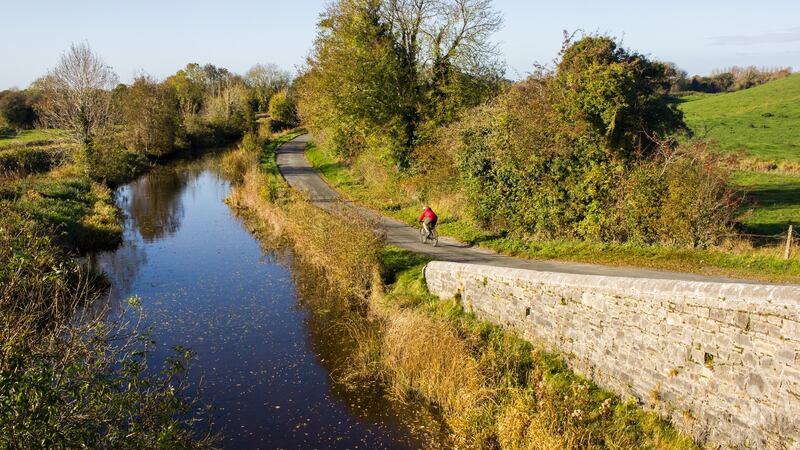
The Royal and Grand Canal Best for cyclists looking to put in the miles
With hundred of kilometres of canal side-paths, Ireland’s network of waterways has a huge amount to offer cyclists interested in exploring the countryside and getting away from roads and traffic. The two canals that connect Dublin with the Shannon, the Royal and the Grand, can be linked to create a 120km route with only 40km of road riding. The path’s quality varies, so it’s more suitable for a mountain bike or hybrid than the narrow tyres of a road bike.
On a perfect autumn Sunday morning my brother-in-law and I set off from Leixlip. Following the Royal Canal west it isn't long before we leave all signs of the city behind and, with the exception of the occasional dog walker, have the canal to ourselves. Full of enthusiasm we make good speed along the path, which is predominantly gravel, with occasional stretches of tarmac and grass. After 40km we leave the Royal Canal and follow empty roads south to the town of Edenderry in Co Offaly, where we join the Grand Canal.
In spite of the short distance between the two canals, the landscape on the Grand has a different, more remote feel. The path is also much rougher, with long stretches of mud and grass. As the light fades so do our legs, and just as it’s getting dark we roll back into Leixlip exhausted but very satisfied after a hard day.
For more information about these routes including maps and gpx files visit threerockbooks.com/cycling
















